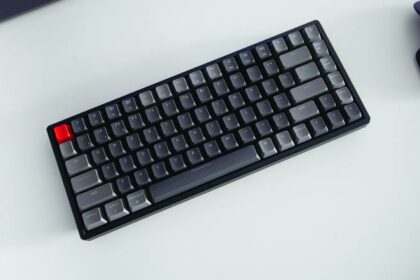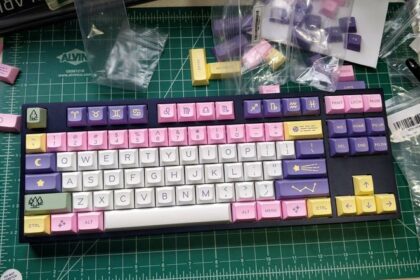Considering how expensive PC gaming can get, we completely understand you not wanting to spend money on a keyboard once your old one starts to malfunction. While there are certain problems that are completely unfixable on a mechanical keyboard, sticky keys are not one of them.
Contrary to popular belief, sticky keys on a mechanical keyboard do not usually occur due to a malfunction in the keyboard. Instead, they happen due to dust and other particles getting stuck beneath the keycaps. They prevent the switches and the key mechanism from working properly and can be fixed with relative ease.
Here, we take a look at how to fix sticky keys on a mechanical keyboard. We will first take a look at all of the items that you will need. Then, we will go through the process of fixing the stuck keys in a step-by-step manner.
What Items do You Need?
One advantage of being a PC gamer is that most of the components and peripherals can be repaired if damaged. For example, it is sometimes possible for you to diagnose and fix an optical mouse sensor on your own.
Sticky keys on mechanical keyboards usually occur due to a buildup of dust. They can also occur if you end up spilling a liquid on your keyboard. Here is all you are going to need if you want to fix sticky keys on your keyboard:
- A can of compressed air
- Keycap puller
- Microfiber cloth
- Isopropyl alcohol (optional)
- Tweezers (optional)
- Small flathead screwdriver (optional)
Fixing Sticky Keys on a Mechanical Keyboard

Once you have gathered everything, here is what you need to do in order to fix the keys that are sticky on your keyboard.
Remove the Keycaps
The first step is to remove the keycaps. If you have a keycap puller tool, this will be easy. Simply slide the keycap puller down the side of the keys until it is firmly planted underneath the key. Then, gently nudge the tool upwards until the key comes off.
It is also possible for you to remove the keys without the keycap puller. For more methods of removing keycaps, take a look at our guide on how to remove keys from a mechanical keyboard.
Clean the Debris
Now, you need to clean all the dust that is underneath the keycap. You should first shake the keyboard thoroughly (make sure it is unplugged). Then, use the can of compressed air, both on the switch and the inside of the keycap.
If you spilled liquid on your keyboard, it is possible that the can of compressed air won’t do the trick. In that case, use a microfiber cloth to wipe the keycap and the switch clean. It will also help if you drop a tiny bit of isopropyl alcohol on the cloth, although this is not necessary in most cases.
After cleaning the debris, you should reattach the keycaps and check if the sticky keys have begun to work properly. If they haven’t, then you may need to open up the switches.
Clean the Switch
On keyboards where the switches are mounted on the PCB and not a plate, it is possible to disassemble the switch itself. However, this is a long and complicated process that may cause irreparable damage to your switch if done improperly. As such, proceed with caution.
First, you should google your keyboard model to make sure that your switches are mounted on the PCB. If they are mounted on the plate instead, then you are out of luck.
In order to open the switches, use the tweezers to depress the latch and then the screwdriver to pry open the plastic casing of the switch. Once the casing is out, you can clean the switch using compressed air, the microfiber cloth, and the isopropyl alcohol.
Remember that once the casing has been removed, you will have a spring and a stem underneath. Once you have cleaned the switch, you need to make sure that you put everything back in the same order that you found it.
It is also possible for you to replace your switch with an identical one from the manufacturer or a third party. However, this would involve desoldering the switches from the PCB (and the plate for certain models) and then soldering the new ones. This is extremely difficult and should only be attempted by a professional.
Check if it is a Software Issue

While this is extremely rare, it is possible that your mechanical keyboard has sticky keys due to a software issue. In this case, the keys will work as normal but will feel like they are sticking (e.g., you will press a key once and find out that it has been registered twice).
In order to fix this, you need to run the system file checker. Go to the start menu and search for ‘Command Prompt’. Here, type: SFC/Scannow.
Once you hit enter, your system will repair any corrupted files that it may have. Remember that it is generally a good idea to scan your system for corrupted files once every few weeks. It takes a short amount of time but helps keep your system in good shape.
Conclusion
We just went through all the ways that you can fix sticky keys on your mechanical keyboard. Compressed air should solve the issue in most cases. However, extreme measures such as disassembling and cleaning the switches may be required occasionally.
One easy way to avoid the issue of sticky keys on your mechanical keyboard in the first place is to take proper care of your peripheral. Learning how to clean a mechanical gaming keyboard can prevent issues such as sticky keys in the first place and extend the lifespan of your keyboard.


